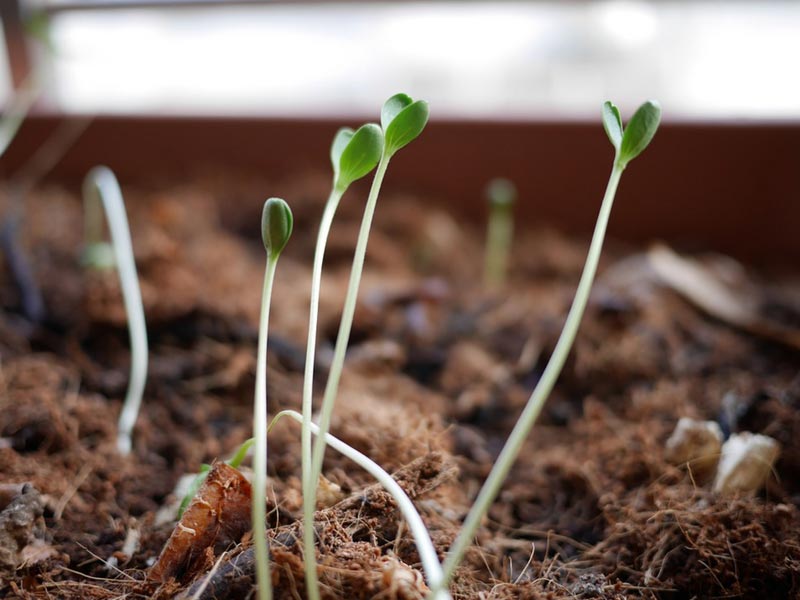
During the spring, the activity is in full swing at the nursery. In recent days, many gardeners have asked us the following question: “My seedlings are spinning, why?”.
What is a spinning seedling?
A spinning seedling results in rapid and tall growth of the seedlings. It is also said that the plant withers. This etiolation results in abnormally long, very thin and weak stems. Rather than stand up straight, they sometimes even lie down. The development of the root system is reduced, as well as that of the leaves, which may show discoloration.
Why are my seedlings spinning?
Spinning seedlings are a frequent phenomenon when seedlings are made warm, indoors. The main cause: too low a light correlated with too high temperatures. Seedlings can also spin if you sow too densely, not spacing your seeds enough.
The “spinning” occurs when the first leaves appear, they immediately start looking for something to photosynthesize: light. And the higher the heat, the more light they will need. If the latter is missing, the plant will persist and seek higher by lengthening their stem.
How to avoid this phenomenon?
To put it simply, in nature, when it’s hot, it’s late spring or summer and the days are long. If you reproduce these temperatures in your living room, you have to match the brightness.
To prevent your seedlings from spinning, several concrete solutions and tips:
- For plants that require temperatures high enough to germinate (peppers, peppers, tomatoes), watch the emergence carefully. Once the first leaves appear, store them in a very bright place (a window sill) but cooler. Remember, moreover, to turn your boxes every day so that all the seedlings are entitled to maximum sunshine.
- If this is not possible, provide additional horticultural lighting, to provide them with extra light that will meet their needs.
- Do not pamper your seedlings too much, do not sow hot plants that grow perfectly well at 10 – 15 C °,
- space your seeds well: a too dense sowing generates too much competition to find the light,
- If all this seems complicated to you, delay your sowing for a few weeks. The days that get longer will provide more light and some seedlings can even be done outside, under shelter.
What to do with a seedling that has spun?
Most of the time, there is no miracle solution: you have to start sowing again because a seedling that has spun rarely gives quality seedlings and any rescue operations are long and tedious. For plants which transplant by burying part of the stem (nightshades), etiolation, if it remains moderate, is less serious since the too long stem will be buried during transplanting. It will then form a well-rounded root system.
And you, do you have any tips for recovering a seedling that has spun?
